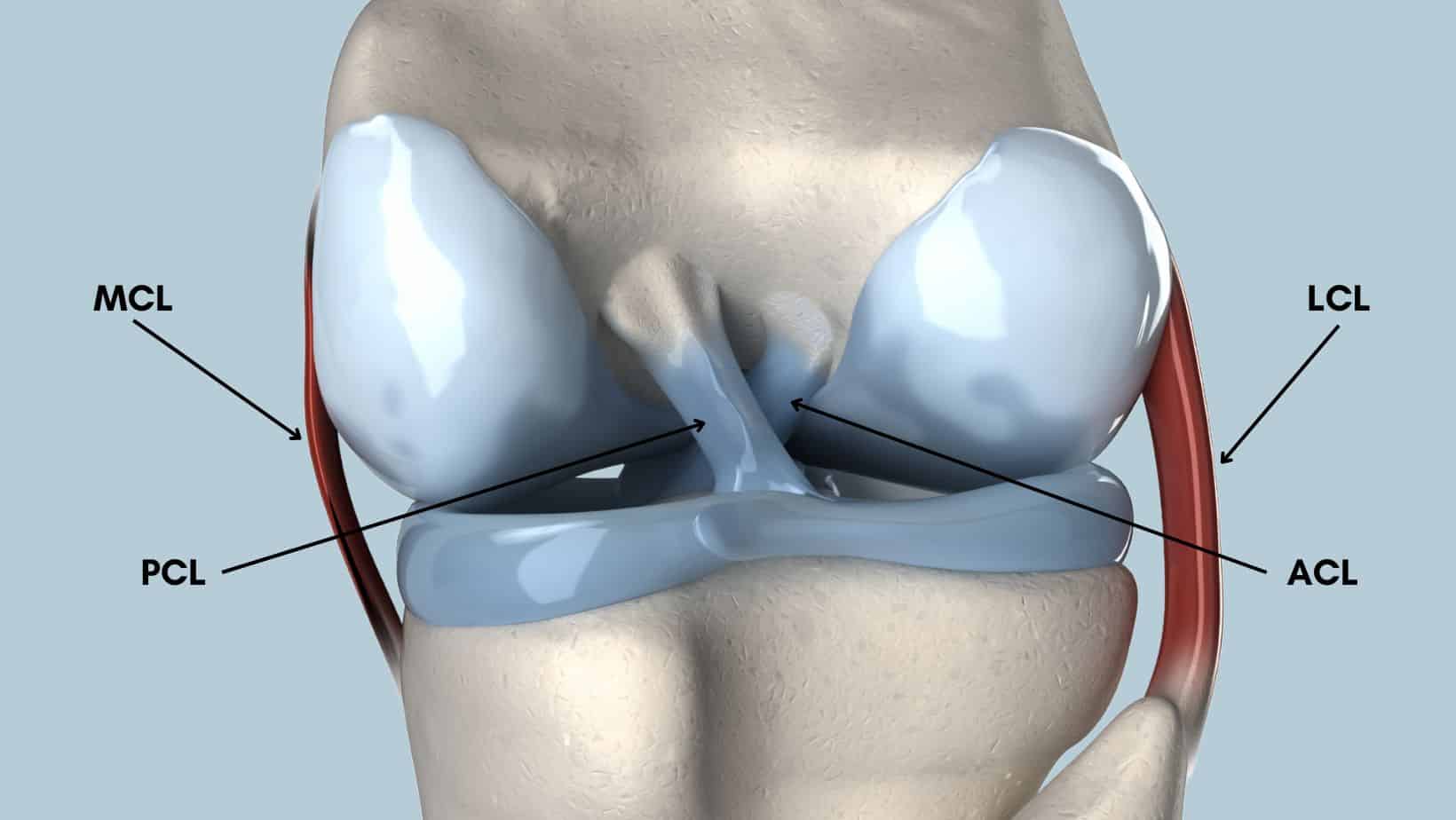Read More >
- Anterior Ankle Impingement - July 24, 2022
- Tarsal Coalition - October 12, 2022
- Sural Nerve Pain - October 3, 2022
What is a ligament?
A ligament is a connective tissue that is made up of strong collagen fibers. They connect bone to bone at a joint to provide stability by restricting a particular direction of movement. They come in a variety of shapes and sizes depending on their location and function, some a small string-like structures, and others are flat, wide bands. The knee has four main ligaments connecting the femur to the tibia and fibula, they restrict forward, backward, inward, and outward movements.
You can look at this Knee Pain Location Chart to see the location of pain when these ligaments are injured.
Cruciate Ligaments of the Knee
There are two cruciate ligaments of the knee, the anterior and posterior. They sit deem in the middle of the joint and cross over each other hence their name.
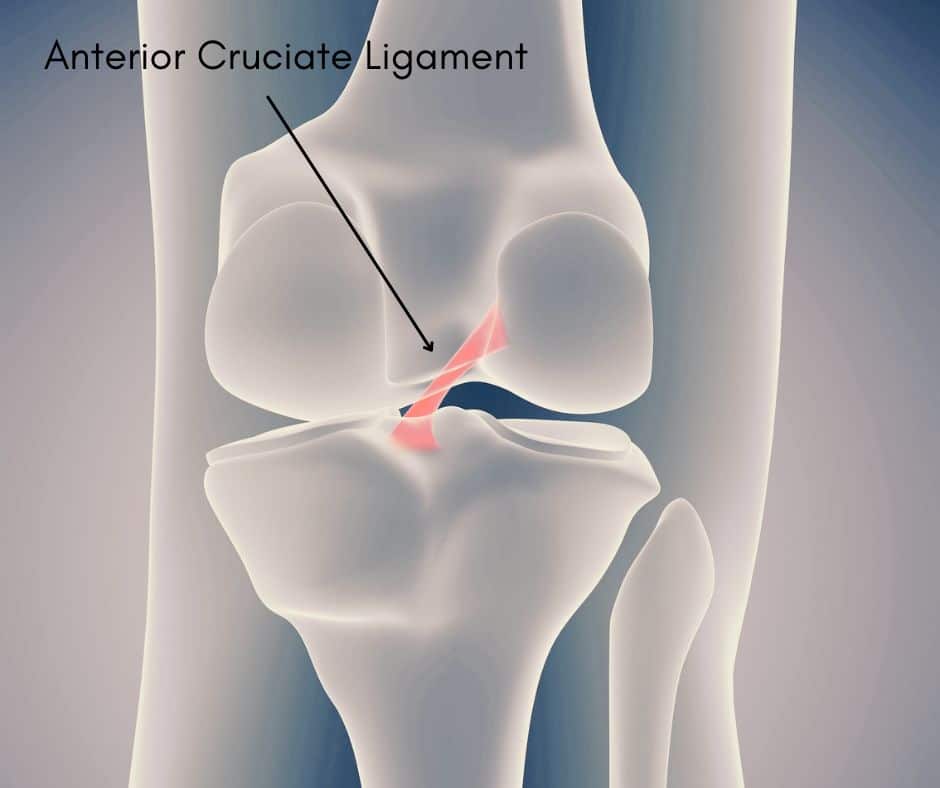
Anterior Cruciate Ligament
The anterior cruciate ligament (ACL) is attached to the medial aspect of the lateral femoral condyle, on the posteromedial corner, and travels inferiorly, medially, and anteriorly to insert intercondylar eminence at the front of the tibia, and the anterior horn of the medial meniscus. Its primary function is to prevent excessive anterior movement of the tibia on the femur. Other functions are to prevent rotation of the tibia both medially and laterally, varus and valgus stress, and hyperextension.
Read our related articles: ACL Injuries in Sport, ACL Sprain, ACL Recovery and ACL Rehab Exercises, ACL Braces, and FAQs.
Posterior Cruciate Ligament
The posterior cruciate ligament (PCL) is attached to the medial femoral condyle on the anterolateral side, it travels superiorly, laterally, and posteriorly to insert with a wide attachment to the tibial plateau on the posterior edge. The primary function of the PCL is to prevent excessive posterior movement of the tibia on the femur. Additionally, it can restrict rotation of the knee, and does this most effectively between the knee flexion angles of 90º and 120º.
Read our related articles: PCL Tear, PCL Tear FAQs, PCL Injury Recovery, and PCL Brace.
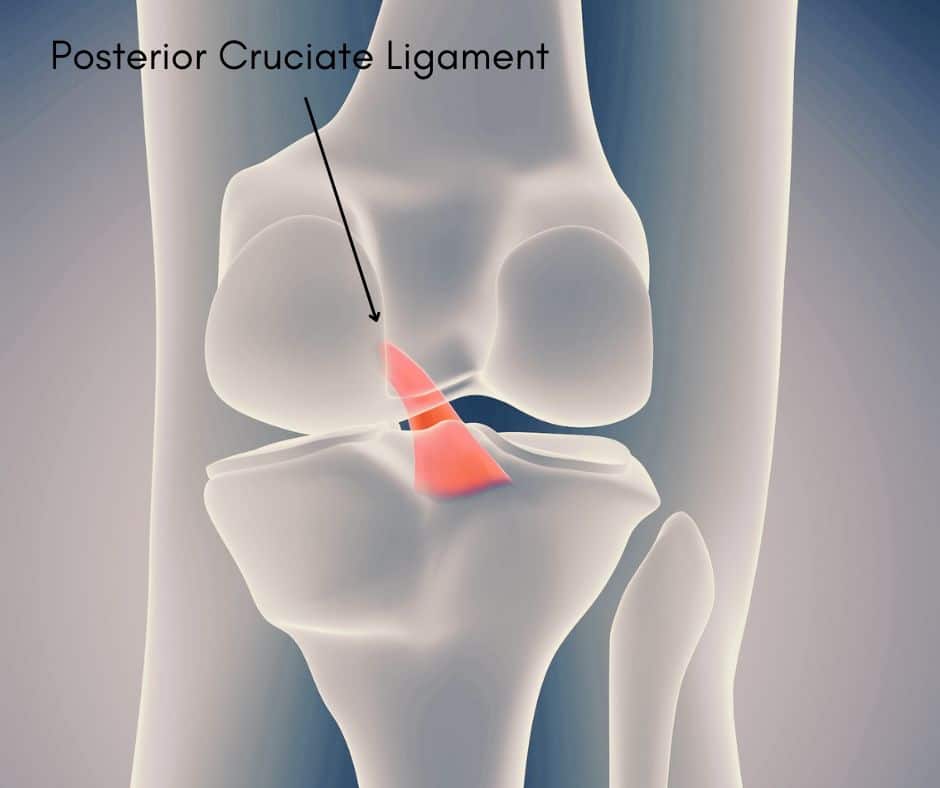
Collateral Ligaments of the Knee
There are two collateral ligaments of the knee that sit on either side of the knee joint on the inside and outside of the knee, they are the medial collateral ligament and the lateral collateral ligament.
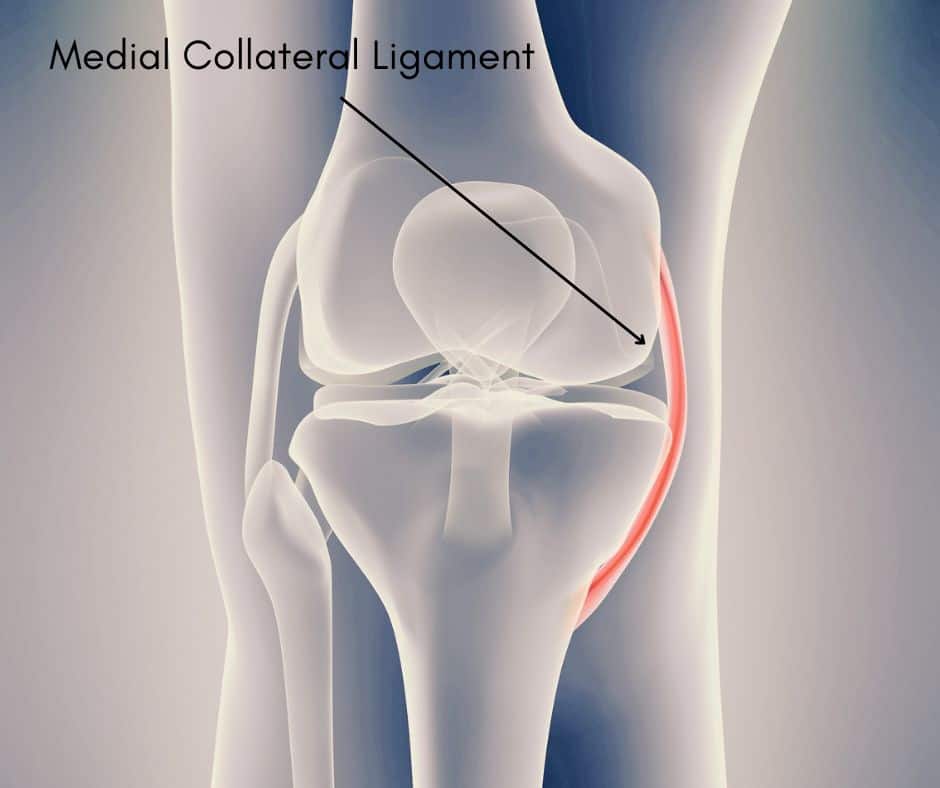
Medial Collateral Ligament
The medial collateral ligament (MCL) has two portions, a superficial and a deep portion. The superficial portion of the MCL (sMCL) attaches to the medial epicondyle of the femur and inserts in two places, the semitendinosus tendon of the hamstrings, and to the tibia at the posteromedial crest. The deep portion of the MCL (dMCL) can be further divided into two distinct ligaments. The meniscofemoral ligament is longer and thinner, it attaches to the femur just below the sMCL, and inserts to the medial meniscus. The meniscotibial ligament attaches to the medial meniscus and inserts to the medial plateau of the tibia. The main function of the medial collateral ligament group is to prevent valgus stress and rotation. The additional functions are to prevent hyperextension and posterior movement of the tibia on the femur. The different components of the MCL group have slightly different functions depending on the position of the knee.
Read our related articles: MCL Injury, MCL Injury FAQs, MCL Injuries in Sport, MCL Injury Treatment, MCL Injury Exercises, and MCL Knee Brace.
Lateral Collateral Ligament
The lateral collateral ligament (LCL) is attached to the femur at the lateral condyle with some relationship with the iliotibial band, and it splits the biceps femoris part of the hamstring muscle group, it inserts to the head of the fibula. The main function of the LCL is to prevent excessive varus movement of the knee, and rotation of the knee, specifically posterolateral rotation of the tibia. It has a secondary function, which is more apparent when there is injury to the cruciate ligaments, which is to prevent anterior and posterior movement of the tibia.
Read our related articles: LCL Injury, LCL Injury FAQs, LCL Injury Recovery, LCL Injury Exercises, and Knee Brace for LCL Injury.
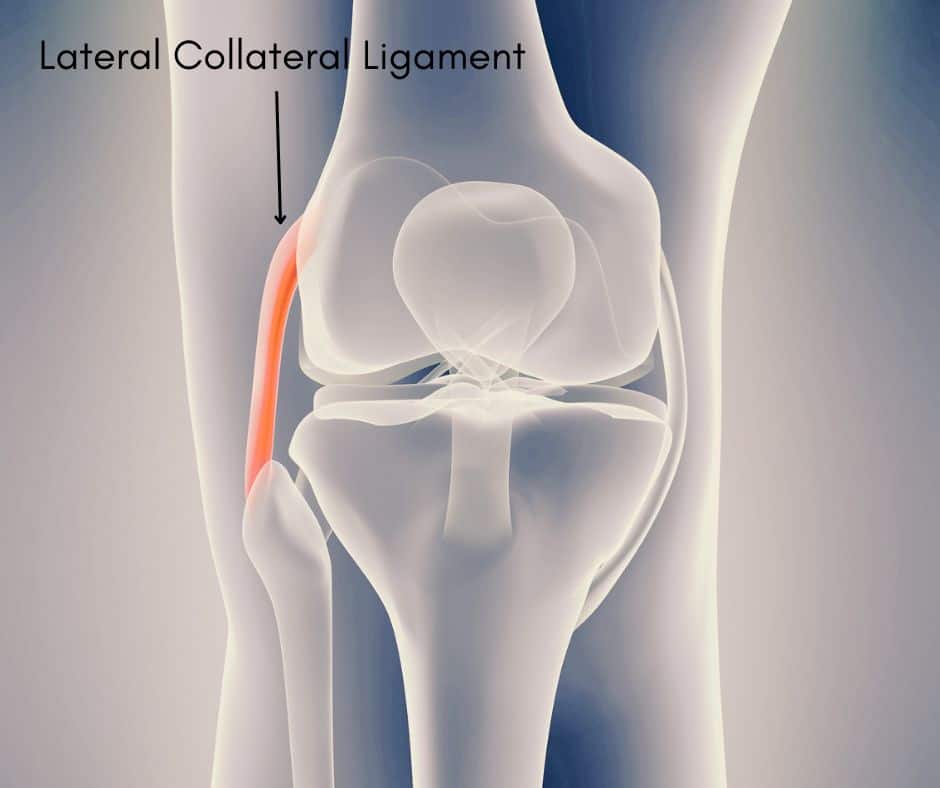
Additional Functions of the Knee Ligaments
Ligaments have the main function of holding bones together at a joint and preventing specific directions of movement, this ensures a stable joint with efficient movement when acted upon by the muscles. An additional function of most ligaments including these four ligaments of the knee is proprioception. Proprioception is the body’s awareness of movement and positioning itself. This also helps efficient movement as well as balance and coordination. Ligaments provide proprioception due to a feedback system that they have via the nerves to the brain of their length and tensile strain.
Physiotherapy with James McCormack
This is not medical advice. We recommend a consultation with a medical professional such as James McCormack. He offers Online Physiotherapy Appointments for £45.
